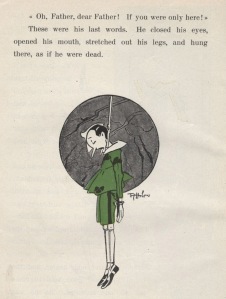I have been asked why the recent focus of The West’s Darkest Hour on Nietzsche. I replied that my intention is to explain (1) the “transvaluation of all values” (Nietzsche’s ultimate philosophy) and (2) “poisonous pedagogy” which goes together with the “trauma model of mental disorders” (illustrated in Nietzsche’s life).
As to #2, I believe that one of the ingredients of the witches’ brew that is killing whites is the toll of child abuse in the adult. In the white nationalist movement no one has suspected this. A few months ago Alex Kurtagic wrote on The Occidental Observer that the engulfing behavior of Jewish mothers towards their male children explained the haughty behavior of the grown-up Jew. But Kurtagic and the rest of writers of the pro-white blogosphere have failed to ask what could the engulfing behavior of white mothers cause on their white children.
I am the only one in the movement who has written on the implications of the trauma model on white pathology. See for example my seminal article, “A body-snatched Spaniard.” I even plan to translate to English the rest of my book Hojas susurrantes, the most didactic and comprehensive explanation of the model under a single cover.
However, since that kind of literature is very strong meat indeed, and since pro-white advocates are uninterested in the subject, I better start introducing it by means of baby steps, like my next series of entries on Carlo Collodi’s novel for children.
Pinocchio
The original Pinocchio tale by Collodi is must reading. A 1880 magazine series (Disney’s 1940 film is a betrayal of the original Italian tale), Collodi projected his feelings for his abusive parents onto the characters of the very manipulative Blue Fairy and Geppetto.
In chapter XV Pinocchio is hanged in front of the Blue Fairy mansion and the motherly Fairy didn’t help him at all. The wooden puppet exclaimed Jesus-like words on the cross:
The editor asked Collodi to rescue Pinocchio in the following issue of the magazine.
♣
As a child Collodi had been tormented in a Jesuit school (incidentally, as a child my father was also tormented in a Jesuit school). Since Collodi (like my father) never settled accounts with the perpetrators, he later identified himself with them; hated the children, illustrated boring school textbooks for them and always lived with his manipulative “Blue Fairy” mother.
The original Le Avventure di Pinocchio is poisonous pedagogy at its worst. The parents and the school system are idealized at the expense of the child’s true self. (Later in my series on Nietzsche you will see the relevance of the Prussian pedagogy applied to the child Nietzsche by his mother and other female figures and his adult breakdown.) A major bestseller, Collodi’s novel was used to manipulate and socialize children in the early 20th century.
In future entries I will show that together with the German biographers of Nietzsche I will be quoting, Alice Miller is the obliged reference to understand “poisonous pedagogy” and ultimately my interpretation of both Pinocchio and many people who have suffered mental breakdowns.
